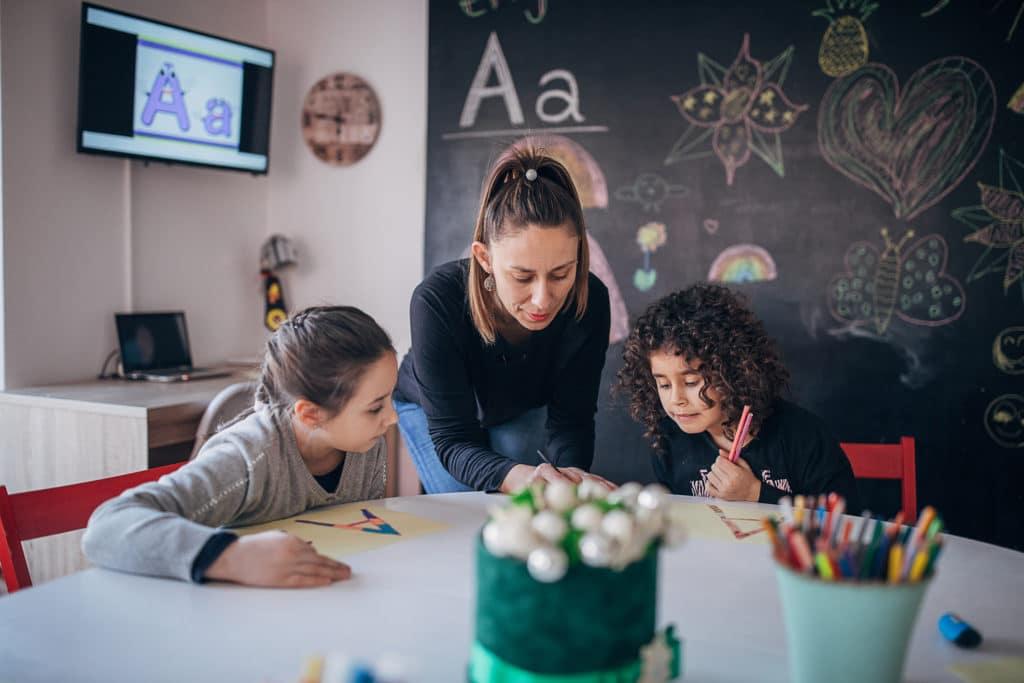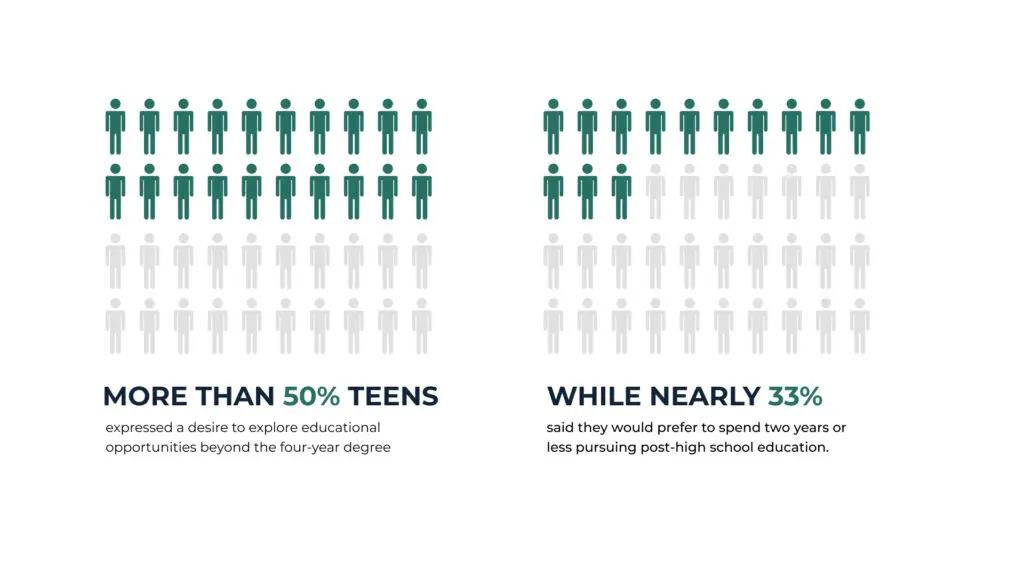In an era defined by rapid change and boundless access to information, Generation Z is rewriting the rules of education. Traditional classrooms and standardized curricula, once seen as the gold standard, are no longer the default path for many young learners. Instead, this digitally native generation is embracing nontraditional learning routes-online courses, mentorships, self-directed projects, and experiential opportunities-that better align with their values, needs, and the evolving demands of the modern world. But what drives this shift away from conventional education? Exploring the motivations behind Gen Z’s preference for alternative learning paths reveals a nuanced landscape shaped by technology, individuality, and a desire for meaningful, flexible, and practical knowledge.
Table of Contents
- The Shift from Conventional Classrooms to Dynamic Digital Platforms
- Embracing Flexibility and Personalized Learning Journeys
- The Role of Technology and Social Media in Shaping Education
- Cultivating Critical Skills through Experiential and Peer-Led Learning
- Recommendations for Supporting Gen Z’s Alternative Educational Choices
- Frequently Asked Questions
- Concluding Remarks
The Shift from Conventional Classrooms to Dynamic Digital Platforms
Traditional classrooms, with their fixed schedules and uniform teaching methods, often struggle to engage Gen Z learners who crave flexibility and personalization. The digital revolution has transformed education into an interactive, on-demand experience, where information is accessible anytime and anywhere. This shift empowers students to take control of their learning journey, blending multimedia, social interaction, and real-time feedback to create a more immersive environment.
Technology-driven platforms offer a diverse array of tools that cater to different learning styles. From gamified lessons to microlearning modules, these innovative approaches break down complex topics into manageable, engaging pieces. The integration of AI and adaptive learning algorithms further customizes content, ensuring that students are neither bored by repetition nor overwhelmed by difficulty.
Key advantages of digital learning platforms include:
- Self-paced progress tailored to individual needs
- Collaborative spaces that foster peer-to-peer interaction
- Immediate access to vast, up-to-date resources
- Multisensory experiences that enhance retention
| Conventional Classrooms | Digital Platforms |
|---|---|
| Fixed schedules | Learn anytime |
| One-size-fits-all lessons | Personalized content |
| Limited resources | Infinite digital libraries |
| Passive learning | Interactive engagement |
As this evolution continues, it’s clear that the classroom of the future is not a room at all but a dynamic ecosystem where technology and creativity converge to meet the unique demands of today’s learners.
Embracing Flexibility and Personalized Learning Journeys
Today’s learners are redefining education by choosing paths that adapt to their unique lifestyles and ambitions. Instead of following rigid curricula, they seek opportunities that offer customized pacing and the freedom to dive deeper into subjects that spark their curiosity. This approach not only nurtures intrinsic motivation but also allows individuals to balance education with work, hobbies, or personal projects seamlessly.
Nontraditional learning platforms often harness technology to provide on-demand access to resources, enabling learners to engage whenever and wherever they prefer. This flexibility empowers students to build knowledge through varied formats-be it interactive videos, podcasts, or collaborative online communities-tailoring their experience to their preferred learning style.
- Self-directed courses: Empower learners to set their goals and timelines.
- Micro-credentials: Offer bite-sized achievements that stack toward bigger qualifications.
- Project-based learning: Encourages practical application over rote memorization.
- Peer collaboration: Fosters community and diverse perspectives.
| Feature | Traditional Path | Nontraditional Path |
|---|---|---|
| Schedule | Fixed semester dates | Flexible, self-paced |
| Learning Style | Lecture-based | Multimedia and interactive |
| Assessment | Exams and essays | Projects and portfolios |
| Credentialing | Degrees | Certificates and badges |

The Role of Technology and Social Media in Shaping Education
Technology and social media have become catalysts in redefining how education is both consumed and delivered. For Gen Z, the traditional classroom is no longer the only-or even the preferred-arena for learning. Platforms like YouTube, TikTok, and Discord offer bite-sized, engaging, and often peer-driven content that breaks away from the rigid structures of conventional education. This shift empowers learners to tailor their educational journeys, picking and choosing knowledge nuggets that align with their interests and pace.
Interactive tools and apps foster a dynamic learning experience that textbooks and lectures often lack. Virtual reality (VR) simulations, gamified learning apps, and online forums enable students to immerse themselves in subjects, encouraging exploration and creativity. Social media also acts as a global classroom, where ideas flow freely and collaboration transcends geographical boundaries.
- Accessibility to diverse expertise without gatekeepers
- Instant feedback through comments and community engagement
- Visual and auditory learning catered to different styles
- Microlearning that fits into busy, multitasking lifestyles
| Tech Tool | Purpose | Gen Z Appeal |
|---|---|---|
| YouTube | Video tutorials and lectures | Visual, self-paced learning |
| TikTok | Short-form educational content | Quick, engaging bursts of info |
| Discord | Community-based learning and support | Peer interaction and real-time help |
| Kahoot! | Gamified quizzes and assessments | Fun, competitive learning |
Ultimately, the blend of technology and social media creates a learning ecosystem where Gen Z feels empowered to navigate education on their own terms. This freedom challenges the one-size-fits-all model, making space for diverse, adaptive, and lifelong learning paths that resonate with a generation raised in the digital age.

Cultivating Critical Skills through Experiential and Peer-Led Learning
In an era where information is abundant and easily accessible, young learners are shifting away from traditional lecture-based methods to embrace hands-on experiences and collaborative environments. This shift reflects a deeper understanding that skills such as problem-solving, adaptability, and communication are best developed through active participation and social interaction rather than passive reception.
Experiential learning encourages students to immerse themselves in real-world challenges, fostering a mindset of exploration and resilience. Rather than memorizing concepts, learners engage with projects, simulations, and real-time feedback, which enhances retention and cultivates a practical skill set relevant to today’s dynamic workplace.
Peer-led learning complements this by creating spaces where individuals can teach, learn, and grow together. It promotes empathy, leadership, and critical thinking as students exchange diverse perspectives and collaboratively navigate complex problems. The peer dynamic transforms learning into a shared journey, making it more relatable and impactful.
- Active problem-solving: Tackling authentic challenges in teams.
- Collaborative feedback: Learning through peer critique and support.
- Self-directed goals: Encouraging autonomy in setting and achieving objectives.
| Skill | Developed Through | Gen Z Preference |
|---|---|---|
| Critical Thinking | Case studies and group debates | High |
| Communication | Peer presentations and discussions | Very High |
| Adaptability | Simulations and real-world projects | High |
| Leadership | Peer mentoring and group roles | Moderate |

Recommendations for Supporting Gen Z’s Alternative Educational Choices
To truly empower Gen Z in their pursuit of alternative educational journeys, it’s essential to recognize the value they place on flexibility and personalization. Traditional systems often prioritize rigid curricula, but supporting Gen Z means embracing learning environments that adapt to individual strengths, interests, and pacing. Educational institutions and parents can foster this by endorsing modular course structures and micro-credentialing that allow learners to build skills in a more fluid, self-directed manner.
Another crucial step is to cultivate a culture that values practical experience alongside theoretical knowledge. Gen Z learners thrive when they can apply concepts in real-world contexts, whether through internships, project-based learning, or community collaboration. Encouraging partnerships between educational platforms and industries not only validates these alternative paths but also enhances employability and confidence.
Support networks play a pivotal role in sustaining motivation and success for those exploring nontraditional options. This includes mentorship programs, peer learning groups, and accessible mental health resources tailored to the unique challenges of self-guided education. By nurturing these connections, we create ecosystems where Gen Z can navigate their unconventional paths with guidance and resilience.
- Encourage experimentation: Allow room for trial and error without stigma.
- Leverage technology: Utilize adaptive learning tools and platforms.
- Recognize diverse credentials: Accept certificates beyond traditional diplomas.
- Promote lifelong learning: Instill curiosity beyond formal education.
| Support Area | Key Action | Impact |
|---|---|---|
| Personalized Learning | Flexible course options | Increased engagement |
| Practical Experience | Industry partnerships | Better job readiness |
| Support Systems | Mentorship & peer groups | Stronger motivation |
Frequently Asked Questions
Q&A: Why Gen Z Prefers Nontraditional Learning Paths
Q1: What defines a nontraditional learning path?
A1: Nontraditional learning paths are educational journeys that diverge from the conventional classroom model. They include online courses, bootcamps, apprenticeships, self-directed learning, and experiential projects, often emphasizing flexibility and practical skills over formal degrees.
Q2: Why is Gen Z gravitating toward these alternative routes?
A2: Gen Z values personalization, immediacy, and relevance. Growing up with digital tools, they seek learning that fits their unique pace and interests, provides real-world application, and avoids the time and financial constraints of traditional education.
Q3: How does technology influence Gen Z’s educational choices?
A3: Technology acts as both a catalyst and a platform. The internet offers a vast array of resources and communities, allowing Gen Z to learn anytime, anywhere. Interactive apps, video tutorials, and virtual mentors make learning engaging and accessible beyond brick-and-mortar institutions.
Q4: Are nontraditional paths effective in career preparation?
A4: Many argue yes. Nontraditional learning often focuses on skills directly applicable to the job market, such as coding or digital marketing. Employers increasingly recognize certifications and portfolios over degrees, valuing proven competencies and adaptability.
Q5: What challenges do nontraditional learners face?
A5: Without the structure of traditional schools, some learners struggle with self-motivation and guidance. Additionally, not all industries equally accept alternative credentials, and networking opportunities might be less abundant outside formal institutions.
Q6: How might traditional education evolve in response to Gen Z’s preferences?
A6: Traditional education is beginning to incorporate more flexible, hybrid models, including online courses, competency-based assessments, and partnerships with industry. This evolution aims to blend the credibility of formal education with the agility Gen Z desires.
Q7: What does this shift mean for the future of learning?
A7: The rise of nontraditional learning paths signals a democratization of education-where learners craft personalized experiences aligned with their goals. It encourages lifelong learning and could reshape how society values knowledge, skills, and credentials in a rapidly changing world.
Concluding Remarks
As the educational landscape continues to evolve, Gen Z’s embrace of nontraditional learning paths signals a shift that challenges long-held assumptions about how knowledge should be acquired. Their preference reflects a desire for flexibility, relevance, and personalization-qualities that traditional systems often struggle to provide. Whether through online courses, apprenticeships, or self-directed projects, this generation is redefining what it means to learn and grow. In doing so, they not only reshape their own futures but also pave the way for a more diverse and adaptable approach to education for generations to come.

